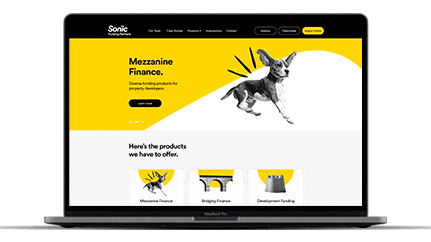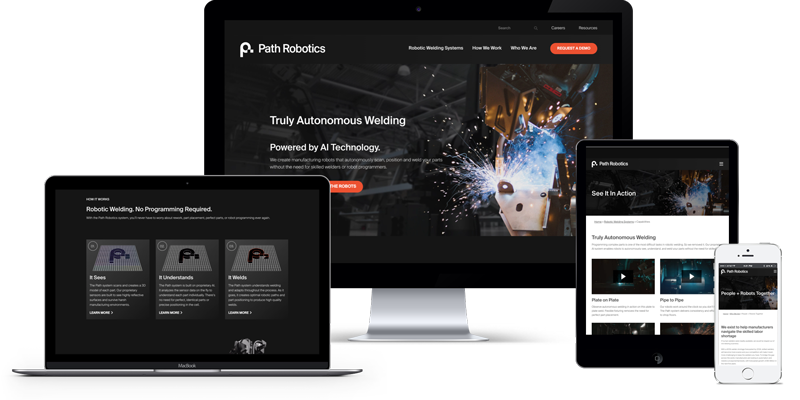The Ultimate Guide to Getting Effective Website Design for Organizations
The Ultimate Guide to Getting Effective Website Design for Organizations
Blog Article

Crafting a User-Friendly Experience: Necessary Elements of Reliable Site Design
In the world of website layout, the value of crafting a straightforward experience can not be overemphasized. Important elements such as a clear navigation framework, receptive layout concepts, and quickly packing times work as the structure for involving individuals properly. Furthermore, an intuitive user interface combined with obtainable material guidelines makes sure that all people, regardless of capacity, can browse with convenience. In spite of these fundamental principles, lots of web sites still falter in providing this smooth experience. Understanding the hidden factors that add to efficient layout can clarify exactly how to enhance customer fulfillment and engagement.
Clear Navigation Structure
A clear navigating structure is essential to reliable internet site design, as it directly influences user experience and engagement. Customers must have the ability to find details easily, as user-friendly navigation reduces frustration and motivates expedition. An efficient format permits visitors to comprehend the connection in between various pages and content, resulting in longer site sees and boosted interaction.
To achieve clearness, designers need to employ acquainted patterns, such as side or leading navigating bars, dropdown food selections, and breadcrumb routes. These aspects not only enhance usability but likewise provide a sense of alignment within the site. Keeping a constant navigation structure across all web pages is essential; this knowledge helps users prepare for where to locate preferred info.
Furthermore, including search performance can further aid users in locating details web content swiftly. In recap, a clear navigation structure is not just a layout selection; it is a calculated element that substantially affects the overall success of a web site by cultivating a enjoyable and reliable user experience.
Responsive Layout Concepts
Effective site navigating sets the phase for a smooth individual experience, which ends up being much more crucial in the context of responsive design principles. Receptive layout makes certain that web sites adapt fluidly to various display dimensions and orientations, boosting accessibility throughout tools. This versatility is attained via versatile grid formats, scalable photos, and media questions that permit CSS to readjust designs based on the gadget's qualities.
Key principles of receptive design consist of fluid formats that use percentages instead of taken care of units, guaranteeing that aspects resize proportionately. Furthermore, using breakpoints in CSS allows the design to transition smoothly in between different device dimensions, enhancing the layout for every screen kind. Making use of responsive pictures is likewise vital; images must immediately get used to fit the display without shedding high quality or causing design changes.
Moreover, touch-friendly user interfaces are essential for mobile individuals, with adequately sized buttons and intuitive motions boosting individual interaction. By integrating these principles, designers can develop sites that not just look aesthetically pleasing yet also offer engaging and practical experiences throughout all devices. Eventually, effective responsive design cultivates user satisfaction, reduces bounce rates, and motivates much longer interaction with the material.
Quick Loading Times
While individuals increasingly anticipate sites to pack rapidly, fast filling times are not just an issue of convenience; they are necessary for retaining site visitors and improving total customer experience. Research indicates that users generally abandon internet sites that take longer than 3 seconds to tons. This abandonment can cause enhanced bounce prices and reduced conversions, eventually hurting a brand's credibility and profits.
Rapid packing times improve customer involvement and satisfaction, as visitors are more probable to check out a website that responds promptly to their interactions. Additionally, online search engine Read Full Report like Google focus on rate in their ranking formulas, implying that a sluggish web site might battle to accomplish exposure in search engine result.

Instinctive Interface
Rapid filling times lay the foundation for an interesting online experience, yet they are just component of the equation. An user-friendly customer interface (UI) is vital to guarantee site visitors can browse a website easily. A properly designed read this article UI enables users to accomplish their objectives with minimal cognitive load, cultivating a seamless communication with the website.
Trick elements of an user-friendly UI consist of consistent layout, clear navigation, and identifiable icons. Uniformity in layout components-- such as shade schemes, typography, and button styles-- assists individuals comprehend how to interact with the website. Clear navigation structures, consisting of sensible food selections and breadcrumb routes, enable customers to locate info swiftly, decreasing disappointment and improving retention.
Furthermore, comments mechanisms, such as hover effects and loading indications, notify individuals regarding their activities and the internet site's feedback. This openness grows trust and motivates continued involvement. Additionally, prioritizing mobile responsiveness guarantees that customers delight in a natural experience throughout tools, dealing with the varied methods audiences gain access to content.
Available Material Guidelines

First, utilize clear and straightforward language, avoiding lingo that might confuse readers. Stress correct heading frameworks, which not only aid in navigating however additionally assist screen viewers in translating content pecking orders properly. Furthermore, offer different message for photos to share their definition to users that check it out rely upon assistive innovations.
Comparison is another vital element; ensure that text stands apart versus the history to improve readability. Make sure that video and audio material consists of captions and transcripts, making multimedia obtainable to those with hearing impairments.
Lastly, integrate key-board navigability right into your style, permitting users who can not utilize a computer mouse to gain access to all site functions (website design). By sticking to these easily accessible content standards, internet developers can create comprehensive experiences that deal with the requirements of all customers, inevitably enhancing individual involvement and complete satisfaction
Final Thought
In final thought, the combination of crucial elements such as a clear navigating framework, responsive style principles, fast loading times, an instinctive user interface, and easily accessible material standards is crucial for developing an user-friendly internet site experience. These elements collectively enhance functionality and engagement, making certain that customers can effortlessly engage and browse with the website. Prioritizing these layout aspects not only improves total contentment however also fosters inclusivity, suiting diverse individual needs and preferences in the electronic landscape.
A clear navigating structure is essential to efficient internet site design, as it straight affects customer experience and engagement. In recap, a clear navigating framework is not merely a style selection; it is a critical element that considerably impacts the overall success of an internet site by fostering a effective and satisfying individual experience.
Additionally, touch-friendly interfaces are crucial for mobile individuals, with properly sized buttons and intuitive gestures improving user interaction.While customers increasingly anticipate web sites to pack swiftly, quickly loading times are not simply a matter of benefit; they are vital for preserving site visitors and boosting overall user experience. website design.In conclusion, the combination of necessary elements such as a clear navigating framework, responsive style concepts, fast filling times, an intuitive user interface, and accessible web content standards is essential for developing a straightforward internet site experience
Report this page